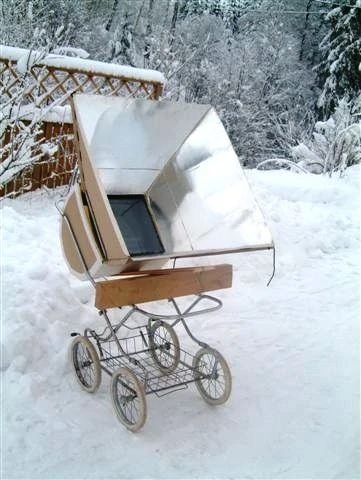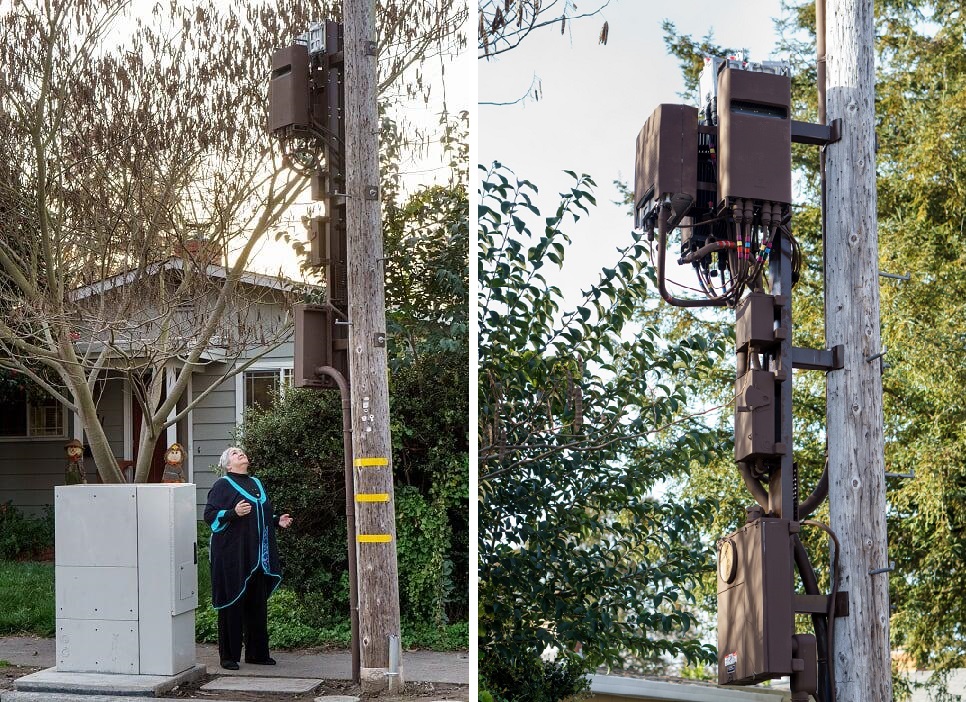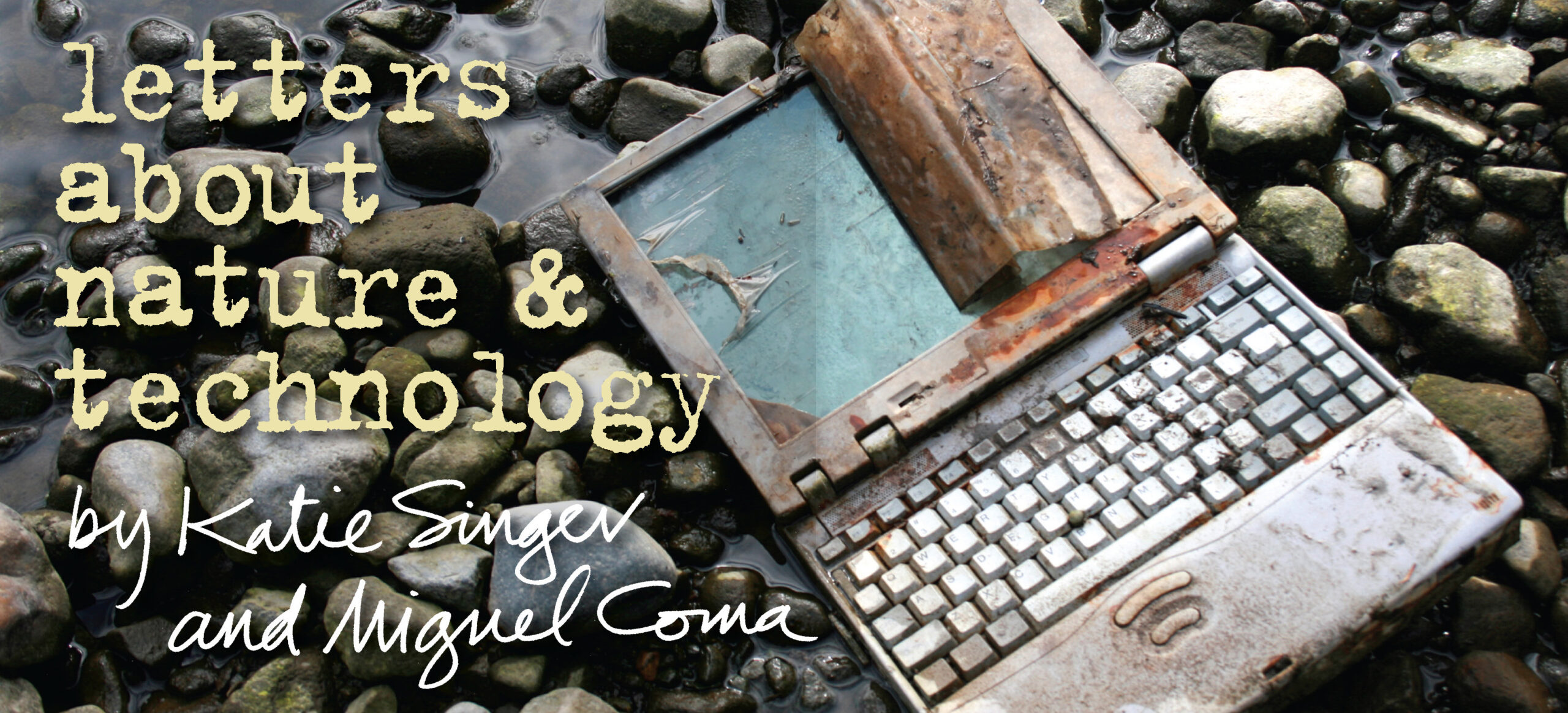How to revise our consuming love affair with electronics
by Katie Singer
Call our love affair with electronics consuming: digital society consumes extraordinary amounts of energy and extracted ores. Manufacturing every smartphone requires hundreds of substances, each with its own energy-intensive, toxic waste and greenhouse gas-emitting supply chain.1 In his 2015 paper, “On Global Electricity Usage of Communication Technology,” Huawei consultant Anders Andrae predicted that by 2030, info-communications-technologies could consume 51% of global electricity and emit 23% of greenhouse gases. Globally, we discard 53.6 million metric tons of electronics every year.2
To reduce this love affair’s destructive parts, to live within our ecological means, we need to respect nature more and decrease our dependence on technology. How on Earth do we do that?
I start with understanding that unless I am aware that I’m part of the problem, I can’t be part of the solution.
When I shared this idea with an education professor, she warned me, “Because we all want to believe that we’re helping the Earth, some people have started marketing ‘solutions.’ But most solutions address only the tip of one elephant’s tail—when actually we’ve got a herd of elephants in trouble.”
Given the magnitude of our digital footprint, the solutions I learned all seemed lame. Then, I wondered: What if every Internet user reduces their media consumption by three percent every month for (say) three years? We might not have an exact way to calculate how much we reduce. Still, we could:
Get informed:
- Recognize that manufacturing anything new requires energy, extracting and refining ores, and emitting toxic and greenhouse gases. Every online activity requires manufacturing, operating and discarding of infrastructure—including Internet access networks, data storage and factories that make devices.
- Create a support group with even one friend or neighbor to share ways to reduce your consumption and emissions.
- Learn the supply chain of one substance in a smartphone.3
- Study how even a computer science department can limit its waste.4
Put your household on a media diet:
- Wait at least four years to upgrade equipment and software. New software can require a new computer; a new computer might need a new printer. Remember the energy, extraction, toxic waste and greenhouse gases embodied in manufacturing every new product.
- Keep your electronics in good repair.
- Buy new goods only when they are essential. (This demands defining “essential.” Given that we have no collective definition, every household is on its own here.)
- Whenever possible, buy electronics with recyclable parts—i.e. ink cartridges.
- I’d like to advocate for buying only repairable electronics; but then you’d have to know someone who knows how to repair broken devices—and get parts for them. For most of us, buying a new replacement is the easiest and cheapest option.
- Give yourself a video diet. In remote networks, watching one hour of video per week consumes more electricity than two new refrigerators use in a year;5 yet not all households have a refrigerator. Sending an email or a text requires energy-consuming data. Voice requires more data than text. A photo takes yet more than voice. One second of video can have 60 photos, and therefore takes the most data. Limit yourself to (say) two hours of video per week.
- Get wired Internet and phone access. Because of power demanded at every cell site and other factors, mobile access uses at least ten times as much energy as wired access.6
- Keep an electronic Sabbath: For one day each week, go without electronics.
- Live with the questions: What’s essential? What’s a luxury? Is this device or service within our ecological means?
Include children in creating your household’s media diet:
- Delay children’s use of electronics at least until they have mastered reading, writing and math on paper. Given the way that COVID 19 has increased dependence on electronics, including among students, this simple idea takes creativity and community. Regularly ask yourself and the children in your care: What are signs that someone’s had too much screen-time? When we’ve had too much screen-time, what activities can help us rebalance? What rules can prevent us from getting out of balance?
- Consider pediatrician Dr. Toril Jelter’s protocol for calming behavior in children with autism and ADHD.7
- Consider child psychiatrist Dr. Victoria Dunckley’s Reset Your Child’s Brain: A Four-Week Plan to End Meltdowns, Raise Grades & Boost Social Skills.8
 Balance dependence on electronics with traditional skills and tools:
Balance dependence on electronics with traditional skills and tools: 
- Grow some of your own food. With raised beds and insulating covers, people can grow vegetables through the winter.
- Compost kitchen scraps.
- Build a solar oven, then cook with it.9
Start a fixit clinic:
- Get retirees to teach young people how to repair electronics, cars and appliances; how to repair and upcycle clothes.
- Press legislators to enact right-to-repair legislation.10
Read books:
- Harrison Brown’s The Challenge of Man’s Future, Viking, 1954. Still relevant, it links technological “progress” with ravaged wildlife habitats, increased human population, hunger and threats to democracy.
- Stan Cox’s The Green New Deal and Beyond: Ending the Climate Emergency While We still Can, City Lights, 2020. Addresses glaring issues not mentioned in the Green New Deal.
- Josh Lepawsky’s Reassembling Rubbish: Worlding Electronic Waste, MIT Press, 2018. Outlines computers’ waste from cradle-to-grave.
- Kyle Devine’s Decomposed: the political ecology of music, MIT Press, 2019. Reports on recorded music’s ecological and human costs.
- David Owen’s The Conundrum: How Scientific Innovation, Increased Efficiency, and Good Intentions Can Make Our Energy and Climate Problems Worse, Riverhead, 2011.
Prevent telecoms from installing new infrastructure
So far, everything I’ve suggested applies to households. To reduce our digital footprint significantly, manufacturers, businesses, governments and telecom providers must also elect media diets. For starters, this means no 5G. No new infrastructure. No new satellites. No new cellular sites. No new back-up batteries. Make use of the infrastructure we have, and keep it in good repair.

In Santa Rosa, California, a cell site was installed on the utility pole without neighborhood notification in January, 2018.
photo credit: https://mystreetmychoice.com
Very few existing rules and regulations limit telecom growth for any reason. Because it can take years to enact a new law, abiding by existing ones might be our most effective approach.
How do we prevent telecom corporations from installing new infrastructure? In the U.S., cities and counties usually have jurisdiction to ensure that telecommunication equipment meets safety requirements. (Forgive me that I don’t know about such statutes in other countries.)
- Insist that telecom providers and your municipality abide by professional engineering statutes and hire professional engineers (PEs) to evaluate and certify that every public right-of-way (i.e. a utility pole) can handle the weight of a 5G cellular site’s electronic gear without risk of fire or collapse, including in high winds, before gear is installed. If anyone questions that cellular equipment catches fire or collapses, visit https://www.electronicsilentspring.com/primers/cell-towers-cell-phones/cell-tower-fires-collapsing/.
- Require officials to state, in writing, whether your municipality or the telecom corporation will be liable in the event that a cellular site installed on a public-right-of-way collapses or catches fire.
- Insist that your municipality abide by Occupational Safety and Hazard Administration (OSHA) regulations that protect workers from exposure to electromagnetic radiation beyond legally allowed limits. Require telecom providers to post signs that alert electricians, roof repairers, tree pruners and others who work near transmitting equipment that it emits radiation. In print visible from a distance, the sign must include a number to phone so that antennas can be turned off quickly and people can work safely. You will need allies here. Perhaps engage your local chapter of International Brotherhood of Electrical Workers (IBEW).
- If you own stock in telecom corporations, use your leverage to hold them accountable to regulations that protect the public from fire and collapse and protect workers from excessive radiation exposure.
I often get overwhelmed by the magnitude of problems with digital technologies. I feel helpless. Then, I dream of every media user committing to reducing our digital footprint by three percent every month for three years. Would teenagers lead the way? Every person’s contribution is valued. Every person who takes action to reduce their digital footprint is worthy of respect.
REFERENCES
- Needhidasan, S., et al., “Electronic waste–an emerging threat to the environment of urban India,” Environ Health Sci. Eng., Jan. 20, 2014; http://www.ncbi.nlm.nih.gov/pmc/articles/PMC3908467.
- globalewaste.org; https://www.greenmatters.com/p/younger-generations-e-waste
- DearGreta.com/letter-3/
- https://www.cambridge.org/core/journals/data-and-policy/article/what-is-the-resource-footprint-of-a-computer-science-department-place-people-and-pedagogy/1FC8ABE5E49963769D8AB9B1B52166C9
- Mills, Mark P., “The Cloud Begins with Coal,” Digital Power Group, 2013.
- Baliga, Jayant, et al., “Energy Consumption in Wired and Wireless Access networks,” IEEE Communications Magazine, June, 2011.
- electronicsilentspring.com/calming-behavior
- https://drdunckley.com/reset-your-childs-brain/
- https://www.youtube.com/watch?v=yRQRRcEvnnM
- https://www.vice.com/en/article/akzyy5/congress-will-consider-national-right-to-repair-legislation-for-medical-equipment
Katie Singer writes about the energy, extractions, toxic waste and greenhouse gases involved in manufacturing computers, telecom infrastructure, electric vehicles and other electronic technologies. She believes that if she’s not aware that she’s part of the problem, then she can’t be part of the solution. She dreams that every smartphone user learns about the supply chain of one substance (of 1000+) in a smartphone. Her most recent book is An Electronic Silent Spring. She currently writes about nature, democracy and technology for Meer.com. Visit www.OurWeb.tech and www.ElectronicSilentSpring.com.
This article was originally published by Meer.com.
